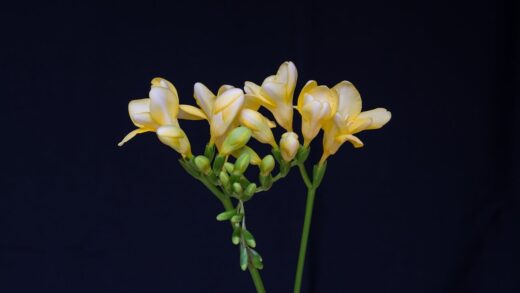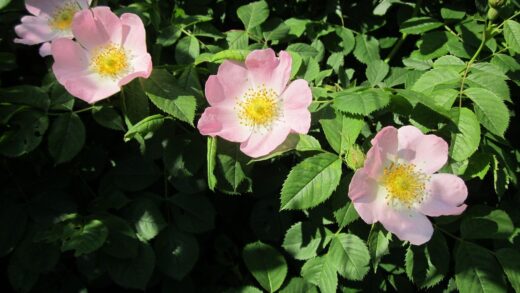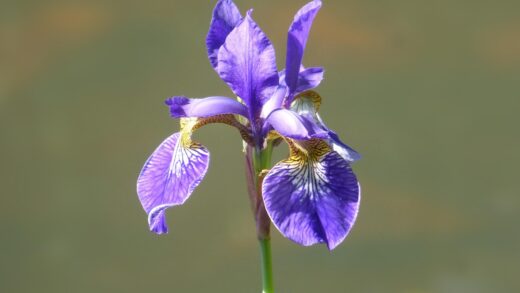Understanding the precise water requirements of the passion flower is fundamental to its successful cultivation, as irrigation practices directly influence its health, growth, and flowering capacity. These exotic vines, originating from the tropical and subtropical regions of the world, have an inherent need for consistent moisture, yet they are highly susceptible to the detrimental effects of waterlogged soil. Achieving the perfect balance is, therefore, a nuanced art that requires careful observation and an understanding of the interplay between the plant’s needs and its environment. Inconsistent or improper watering is one of the most common pitfalls in growing Passiflora, often leading to a range of issues from leaf drop to root rot. This guide will provide an in-depth exploration of how to irrigate your passion flower effectively, ensuring it receives the hydration it needs to flourish without succumbing to the dangers of overwatering.
The primary goal of any irrigation strategy for passion flowers should be to maintain evenly moist soil throughout the root zone. During the active growing season of spring and summer, when the plant is producing new leaves, stems, and flowers, its demand for water is at its peak. This typically translates to more frequent watering, but the exact schedule is not static; it is dictated by environmental conditions such as temperature, humidity, and sunlight exposure, as well as the plant’s size and whether it is grown in a container or in the ground. A plant in a porous terracotta pot exposed to full sun will require water far more often than one planted in a shaded garden bed.
A crucial aspect of proper watering is the technique itself. It is far more beneficial to water the plant deeply and thoroughly, rather than lightly and frequently. A deep watering ensures that moisture penetrates the entire root ball, encouraging the roots to grow deeper into the soil, which in turn creates a more resilient and drought-tolerant plant. When watering, continue to apply water until it is seen draining from the bottom of the container or until the soil in the garden is saturated to a depth of several inches. This approach prevents the build-up of salts in the soil and ensures all roots have access to moisture.
Conversely, the greatest threat to a passion flower’s root system is excessive water and poor drainage. The roots require oxygen to function properly, and when the soil is constantly saturated, these air pockets become filled with water, effectively suffocating the roots. This condition, known as root rot, is a fungal disease that can quickly lead to the decline and death of the plant. It is therefore imperative to plant your passion flower in a well-draining soil mix and in a container with adequate drainage holes to allow excess water to escape freely.
Factors influencing water needs
The water requirements of a passion flower are not fixed but are instead influenced by a dynamic range of environmental and physiological factors. A proficient gardener must learn to assess these factors to tailor their watering schedule accordingly. The most significant influence is the current climate and weather. During hot, dry, and windy periods, the rate of transpiration—the process by which plants lose water vapor through their leaves—increases dramatically, necessitating more frequent and abundant irrigation. In contrast, during cooler, overcast, or humid weather, the plant’s water needs will be significantly reduced.
More articles on this topic
The stage of the plant’s growth cycle is another critical determinant of its water demand. In the spring and summer, during periods of vigorous vegetative growth and active flowering, the plant is metabolically active and requires a consistent supply of water to support these energy-intensive processes. As the plant transitions into the autumn and winter, its growth slows down, and it enters a state of semi-dormancy or full dormancy. During this rest period, its water requirements decrease substantially, and watering should be reduced accordingly to prevent the soil from becoming cold and waterlogged.
The growing medium and container type also play a pivotal role. A plant grown in a small, porous terracotta pot will dry out much faster than one in a large, non-porous plastic or glazed ceramic container. Similarly, a passion flower planted in a sandy, fast-draining garden soil will need more frequent watering than one in a heavier clay soil that retains moisture for longer. Understanding the properties of your specific soil or potting mix is essential for developing an appropriate watering rhythm.
Finally, the specific species of Passiflora can also influence its water needs. While most species appreciate consistent moisture, some, particularly those native to drier regions, may be more tolerant of short periods of dryness. Conversely, species from rainforest environments will be less tolerant of drought and may require higher humidity and more consistent soil moisture. Researching the specific needs of your particular cultivar can provide valuable insights into its ideal irrigation regimen.
Signs of overwatering and underwatering
The ability to recognize the signs of both overwatering and underwatering is a crucial skill for any passion flower enthusiast, as it allows for timely intervention before serious damage occurs. While their initial symptoms can sometimes appear similar, there are subtle differences to look for. Underwatering is typically characterized by wilting leaves and stems, which may appear limp and droopy. The leaves may also start to turn yellow, often beginning at the margins, and become dry and crispy to the touch. Another key indicator of an underwatered plant is soil that is visibly dry and pulling away from the sides of the pot.
More articles on this topic
Overwatering, on the other hand, is a more insidious problem, and its symptoms can often be mistaken for a lack of water. One of the most common signs of an overwatered passion flower is yellowing leaves, particularly the lower, older leaves, which may drop from the plant prematurely. Unlike the crispy yellow leaves of an underwatered plant, these will often feel soft and limp. The plant may also exhibit stunted growth, a general lack of vigor, and may fail to produce new flower buds. In severe cases, the base of the stem may become soft and mushy, a clear sign that root rot has set in.
A reliable way to distinguish between the two issues is to carefully inspect the soil. If the symptoms are present but the soil is consistently wet or soggy to the touch, overwatering is the likely culprit. If the soil is dry and hard, underwatering is the more probable cause. It is important to check the soil moisture not just at the surface but also a few inches down into the root ball to get an accurate assessment. Sometimes the surface can be dry while the lower portion of the pot remains saturated.
Upon identifying the problem, immediate corrective action is necessary. For an underwatered plant, a thorough soaking is required to rehydrate the root ball. It may be beneficial to place the pot in a tray of water for about an hour to allow the soil to absorb moisture from the bottom up. For an overwatered plant, the first step is to cease watering and allow the soil to dry out. It may be necessary to improve drainage by repotting the plant into fresh, well-draining soil and a pot with adequate drainage holes, carefully trimming away any brown, mushy roots in the process.
Irrigation techniques for container-grown plants
Watering passion flowers grown in containers requires a different approach than those planted in the garden, as the limited volume of soil in a pot can dry out much more quickly. The key to success is to provide thorough and consistent moisture without leaving the roots to sit in stagnant water. The most effective technique is to water the plant deeply until water flows freely from the drainage holes at the bottom of the pot. This ensures that the entire root ball is saturated and also helps to flush out any excess mineral salts that may have accumulated in the potting mix.
After a deep watering, it is crucial to allow the top inch or two of the potting mix to dry out before watering again. This fallow period is vital for allowing oxygen to penetrate the root zone. A simple way to check the moisture level is to insert your finger into the soil; if it feels dry at a depth of one to two inches, it is time to water. Avoid adhering to a rigid schedule, such as watering every other day, and instead, water based on the plant’s actual needs, which will fluctuate with the weather and the season.
The choice of container can significantly impact your watering routine. Porous materials like unglazed terracotta allow moisture to evaporate through their walls, causing the soil to dry out more quickly. This can be beneficial in preventing overwatering but may require more frequent irrigation, especially in hot weather. Non-porous containers, such as plastic or glazed ceramic, retain moisture for longer. Regardless of the material, it is absolutely essential that the container has adequate drainage holes to prevent water from pooling at the bottom.
For container-grown plants, it can also be advantageous to occasionally water from the bottom. This involves placing the pot in a saucer or tray of water for 30 to 60 minutes, allowing the soil to wick up moisture through the drainage holes. This method ensures that the entire root ball is evenly hydrated and can be particularly useful if the potting mix has become so dry that it is hydrophobic and repels water from the surface. However, this should not be the sole method of watering, as it does not flush out excess salts from the soil as effectively as top watering does.
Watering during different seasons
Adapting your watering practices to the changing seasons is critical for maintaining the health of your passion flower throughout the year. The plant’s water requirements are highest during the spring and summer, which constitute its main growing and flowering season. During this period of active growth, the combination of longer daylight hours, higher temperatures, and increased metabolic activity means the plant will transpire more rapidly and require a consistent supply of moisture. You should check the soil frequently and expect to water every few days, or even daily during particularly hot spells, especially for plants in containers.
As autumn approaches, the plant’s growth rate naturally begins to slow down in response to shorter days and cooler temperatures. This signals the time to gradually reduce the frequency and volume of watering. The soil will take longer to dry out, and the plant’s water uptake will be lower. Continuing to water with the same frequency as in the summer can easily lead to waterlogged conditions and increase the risk of root rot. Allow the soil to dry out more between waterings, and be particularly mindful of cool, wet weather.
During the winter months, the passion flower will enter a period of dormancy or significantly reduced growth, especially in temperate climates. Its water needs during this time are minimal. For plants that are being overwintered indoors or in a protected location, watering should be infrequent, perhaps only once every few weeks. The goal is simply to prevent the root ball from drying out completely. The soil should be kept on the drier side of moist. Overwatering during winter is one of the most common mistakes and is a frequent cause of plant loss during this period.
When spring arrives and you begin to see the first signs of new growth, you can gradually start to increase the frequency of watering once again. As the new shoots and leaves develop, the plant’s demand for water will rise, and you can transition back into your summer watering routine. This careful attunement of your irrigation practices to the plant’s natural seasonal cycle is a hallmark of successful and attentive gardening, ensuring your passion flower remains healthy and vigorous year after year.

















